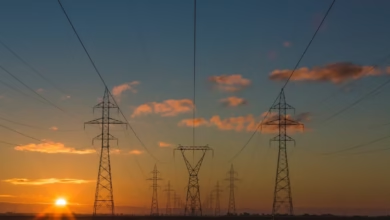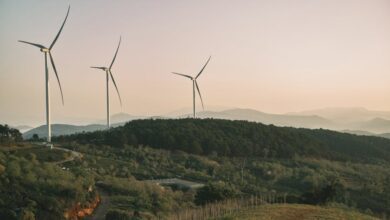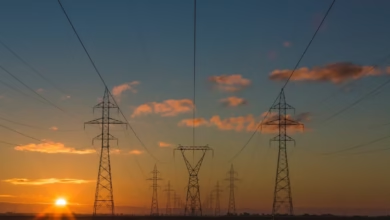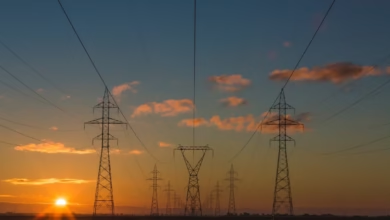Harnessing the Power of Water: Hydropower’s Role in the Energy Transition and Innovations for a Sustainable Future

As the world grapples with the urgent need for sustainable energy solutions, hydropower emerges as a vital player in the energy transition. Utilizing the natural flow of water to generate electricity, hydropower not only offers a renewable energy source but also stands out as a reliable alternative to fossil fuels. With the rising concerns over climate change and the impacts of energy consumption on our planet, understanding the role of hydropower in advancing energy efficiency and promoting green energy is more crucial than ever. In this article, we will explore the pivotal role hydropower plays in reshaping energy markets, comparing its benefits against fossil fuels, and examining innovative technologies such as smart grids and energy storage that enhance its potential. By delving into global energy trends and energy policy, we aim to showcase how hydropower can contribute to energy security and drive forward the necessary investments in renewable energy solutions for a sustainable future.
- 1. The Role of Hydropower in the Energy Transition: A Sustainable Solution for Renewable Energy
- 2. Comparing Hydropower and Fossil Fuels: Impacts on Energy Efficiency and Climate Change
- 3. Innovations in Hydropower: How Smart Grids and Energy Storage Enhance Green Energy Potential
1. The Role of Hydropower in the Energy Transition: A Sustainable Solution for Renewable Energy
As the world pivots towards sustainable solutions for electricity generation, hydropower plays a vital role in the energy transition, offering a reliable and efficient form of renewable energy. Unlike fossil fuels, which significantly contribute to climate change, hydropower harnesses the natural flow of water to produce electricity, making it a cornerstone of green energy strategies.
One of the key advantages of hydropower is its ability to provide energy storage solutions. By utilizing reservoirs, hydropower plants can store excess energy generated during peak production times, which can then be released during high demand periods. This capability enhances energy efficiency and supports the stability of energy markets, especially as the share of intermittent sources like solar power and wind energy increases.
In the context of global energy trends, hydropower not only complements other renewable sources but also serves as a backup for nuclear energy and fossil fuels, thereby enhancing energy security. With proper energy policy and investment in hydropower infrastructure, countries can reduce their dependence on energy imports and improve their energy resilience.
Moreover, the integration of hydropower with smart grids and distributed energy systems can lead to innovations in energy transportation and management. As we advance in energy R&D, the potential for hydropower to support electric vehicles and other green technologies becomes more pronounced, positioning it as a crucial component in the broader energy economics landscape.
In summary, hydropower is not just a renewable energy source; it is an essential part of the energy transition. By leveraging the power of water, we can move towards a more sustainable future, characterized by reduced carbon emissions and improved climate change mitigation efforts. As hydropower continues to evolve and integrate with other energy innovations, it will remain a key player in achieving a balanced and robust energy strategy.
2. Comparing Hydropower and Fossil Fuels: Impacts on Energy Efficiency and Climate Change
Hydropower stands out in the energy landscape as a leading form of renewable energy, especially when compared to fossil fuels. One of the key advantages of hydropower is its energy efficiency. Hydropower plants can convert over 90% of the available energy in flowing water into electricity, making them highly efficient compared to traditional fossil fuel power plants, which typically achieve efficiency rates of 33% to 45% (U.S. Department of Energy, 2020).
In terms of climate change, hydropower is a clean energy source that produces negligible greenhouse gas emissions during operation. In contrast, the burning of fossil fuels—such as coal, oil, and natural gas—releases significant amounts of carbon dioxide and other pollutants, contributing to global warming and air quality deterioration. As the world grapples with the urgent need for an energy transition, the shift from fossil fuels to green energy sources like hydropower is essential for meeting climate targets and reducing our carbon footprint.
While fossil fuels have dominated energy markets for decades, the increasing awareness of climate change and the need for energy security has led to a surge in energy investments aimed at renewable energy solutions. Global energy trends indicate a gradual decline in fossil fuel reliance, with renewable sources, including hydropower, solar power, and wind energy, gaining traction. Energy policy initiatives are now more focused on fostering innovations in energy storage, smart grids, and distributed energy systems to enhance the efficiency of renewable energy integration.
Additionally, hydropower can play a crucial role in energy storage solutions, helping to balance supply and demand, especially as more intermittent sources like solar and wind energy are deployed. By utilizing pumped-storage hydropower, excess energy generated during low-demand periods can be stored and released when needed, thereby enhancing overall energy efficiency.
The comparison between hydropower and fossil fuels highlights the former's potential as a cornerstone in the global energy transition. As countries aim to reduce their energy imports and increase energy exports, investing in hydropower and other renewable solutions becomes increasingly vital. This shift not only aligns with climate goals but also supports the development of a sustainable energy economy that prioritizes energy innovations and long-term energy security.
References:
U.S. Department of Energy. (2020). Hydropower. Retrieved from https://www.energy.gov/
3. Innovations in Hydropower: How Smart Grids and Energy Storage Enhance Green Energy Potential
Innovations in hydropower are playing a crucial role in enhancing the potential of green energy, particularly through the integration of smart grids and energy storage solutions. As the world shifts towards a more sustainable energy landscape, characterized by the energy transition from fossil fuels and nuclear energy to renewable energy sources, hydropower stands out as a reliable and efficient option.
Smart grids are revolutionizing how we manage and distribute energy generated from hydropower. By employing advanced digital communication technology, smart grids enhance energy efficiency and optimize energy markets. They allow for real-time monitoring and management of energy flows, facilitating the integration of various renewable energy sources such as solar power and wind energy. This interconnectedness not only improves energy security but also enables a more resilient energy infrastructure capable of responding to fluctuating demand patterns.
Energy storage is another pivotal innovation that complements hydropower. With the growing prevalence of intermittent renewable sources like solar and wind, energy storage systems provide a buffer, allowing excess energy to be stored and released when demand peaks. This capability is particularly crucial in hydropower, where water flow can be managed to generate electricity during high-demand periods, thereby enhancing the overall efficiency of the energy system. Moreover, energy storage technologies are evolving, making it possible to utilize various forms of stored energy, including thermal energy, hydrogen energy, and even bioenergy, in conjunction with hydropower.
The combination of smart grids and energy storage significantly impacts energy policy and investment strategies globally. As countries seek to meet climate change goals and reduce reliance on fossil fuels, the role of hydropower in a diversified energy portfolio becomes increasingly important. Innovations in these areas not only bolster the viability of hydropower as a sustainable energy source but also contribute to the broader goals of carbon capture and reducing greenhouse gas emissions.
In summary, the integration of smart grids and energy storage technologies positions hydropower as a key player in the future of green energy, aligning with global energy trends towards a more sustainable and efficient energy economy. As countries navigate energy imports and exports, the emphasis on distributed energy resources and energy R&D will be critical to ensuring a successful transition to cleaner energy solutions.
In conclusion, hydropower stands out as a critical player in the ongoing energy transition towards a more sustainable future. As we navigate the complexities of global energy trends, the advantages of hydropower over fossil fuels become increasingly evident, particularly in terms of energy efficiency and its minimal impact on climate change. The integration of innovations such as smart grids and energy storage solutions not only enhances the viability of hydropower but also positions it as a cornerstone of green energy strategies.
With the pressing need for energy security and the urgency of combating climate change, investing in hydropower is essential for shaping an energy policy that prioritizes renewable energy sources. As we explore diverse energy markets, it is clear that hydropower, alongside other renewables like solar and wind energy, will play a vital role in achieving our energy goals. By harnessing the potential of hydropower and embracing ongoing energy R&D, we can ensure a resilient energy future that supports sustainable economic growth while mitigating the impacts of climate change.
Ultimately, the path forward lies in recognizing hydropower not just as an alternative, but as an integral component of a diversified energy portfolio that includes bioenergy, nuclear energy, and emerging technologies like hydrogen energy. By prioritizing such investments, we can foster a dynamic energy landscape that addresses the challenges of energy imports, exports, and the overall demands of modern society.





